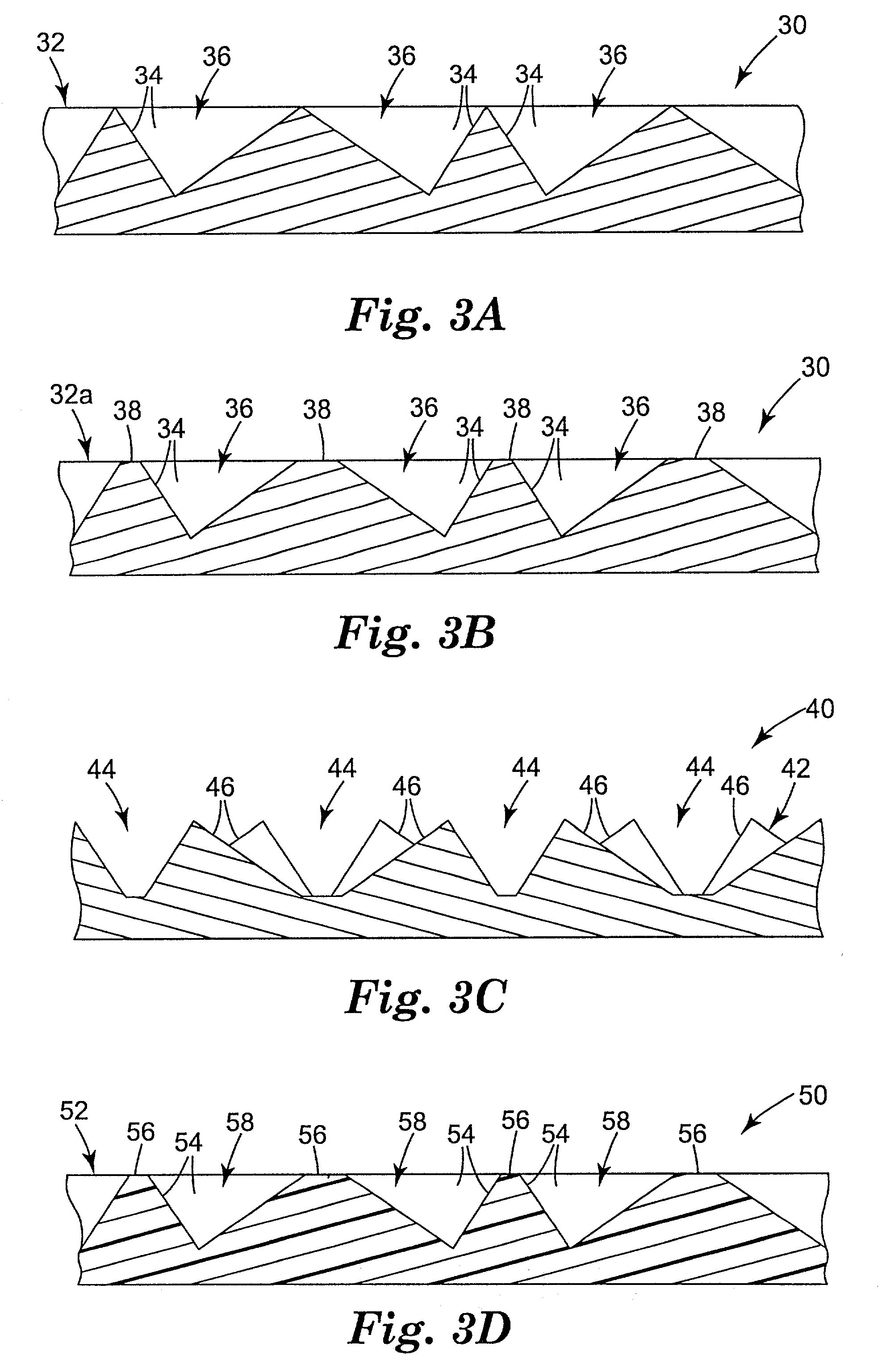Cube corner cavity based retroreflectors and methods for making same
a cube corner and cavity technology, applied in the direction of diffusing elements, instruments, transportation and packaging, etc., can solve the problems of corrosion or other degradation of the reflective film, each of these techniques has its own benefits and limitations, and achieves efficient retroreflection of incident light, high specular reflectivity, and low cost
- Summary
- Abstract
- Description
- Claims
- Application Information
AI Technical Summary
Benefits of technology
Problems solved by technology
Method used
Image
Examples
examples 1-4
[0049] Four body layers were embossed with a mold to impart a structured surface similar to that shown in FIG. 1. The mold had a structured surface consisting of three sets of flat-bottomed grooves, and was the negative replica of a prior mold whose upper portions had been ground down flat with an abrasive. The embossed body layers were made of polycarbonate. The body layers for Examples 1 and 2 had a thickness of about 43 mils (1.1 mm) and included sufficient TiO.sub.2 filler to make them opaque with a diffuse white surface appearance. Those for Examples 3 and 4 had a thickness of about 18 mils (0.46 mm) and included instead a red dye to give a diffuse red surface appearance. The structured surface of each body layer consisted essentially of three intersecting sets of parallel ridges. Two of the sets, refered to as "secondary" ridge sets, had uniform ridge spacings of about 16 mils (408 .mu.m) and intersected each other at an included angle of about 70 degrees. The other set of par...
examples 5-8
[0054] Samples were made to better quantify the roughening concept. Four polycarbonate body layers were made having a structured surface similar to that of FIG. 1 with three intersecting sets of parallel ridges, each ridge set having a uniform spacing of about 8.5 mils (216 .mu.m) and each set intersecting the other two sets at 60 degrees, thus forming non-canted cube corner cavities. Each ridge had a flat top surface about 1.65 mils (42 .mu.m) in transverse dimension, so that the top surfaces took up about 50% of the structured surface area in plan view. A flat-tipped diamond tool had been used to form the master mold from which the body layers were replicated, and as a result the top surfaces were initially optically smooth. The top surfaces of the samples were then selectively roughened by lightly rubbing the structured surface side of the body layer with different abrasives. Thereafter, the modified structured surfaces were vacuum coated with a continuous aluminum vapor coat abo...
PUM
| Property | Measurement | Unit |
|---|---|---|
| roughness | aaaaa | aaaaa |
| specular reflectivity | aaaaa | aaaaa |
| specular reflectivity | aaaaa | aaaaa |
Abstract
Description
Claims
Application Information
 Login to View More
Login to View More - R&D
- Intellectual Property
- Life Sciences
- Materials
- Tech Scout
- Unparalleled Data Quality
- Higher Quality Content
- 60% Fewer Hallucinations
Browse by: Latest US Patents, China's latest patents, Technical Efficacy Thesaurus, Application Domain, Technology Topic, Popular Technical Reports.
© 2025 PatSnap. All rights reserved.Legal|Privacy policy|Modern Slavery Act Transparency Statement|Sitemap|About US| Contact US: help@patsnap.com



